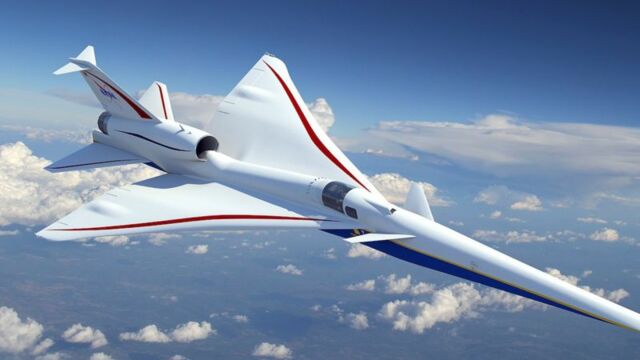NASA Is Building A Supersonic Plane As Fast As The Concorde, But A Lot Quieter

The supersonic plane developed by NASA is finally ready for its final assembly and to hit the skies! Known as the X-59 QueSST, it is apparently not only capable of surpassing the speed of sound but can do so without the deafening boom that comes with breaking the sound barrier.
Discover our latest podcast
The Concorde was the supersonic commercial plane capable of travelling from London to New York in just 3 hours instead of the normal 7-hour flight time. This was a huge technological achievement that, however, was retired 27 years after it was launched in 1976 following a fatal accident that occurred on 25th July 2000 that cost the lives of 113 people. These journeys were also particularly expensive due to the amount of fuel this plane consumed. The aircraft also had one huge drawback: the noise. Why was it so noisy? Because of the supersonic boom, which was caused by the shockwave that was produced when the plane surpassed the speed of sound.
However, the Concorde was nevertheless a very impressive machine. Alongside the Tupolev Tu-144, which was only in use for a few months, it is the only commercial supersonic plane to have ever been in operation, but which unfortunately didn’t last. In a statement released on 16th December 2019, NASA announced that their new supersonic plane X-59 Quiet SuperSonic Technology (QueSST) is ready for its final assembly. All of its systems and parts will be assembled in a single worksite in 2020 and should hopefully be ready for its first trial flight in 2021. It is said to be able to reach speeds similar to that of its predecessor and has even been named the ‘Son of Concorde’.
More under this adMore under this adOur @NASAAero X-59 ✈️ was cleared for final assembly & integration of its systems. The X-59 is designed to fly faster than sound without loud sonic booms. Data from the flights will help establish new rules for commercial supersonic air travel over land. https://t.co/NdLZau5ffCpic.twitter.com/MJZWKcEsBx
— NASA (@NASA) December 17, 2019
Minimising the shockwave
According to NASA, the X-59 QueSST will be capable of flying at similar speeds to the Concorde, which had a cruising speed of 1,852.2km/h. This speed is known as ‘Mach 1.5’ and equates to 1.5 times the speed of sound, which is around 1,224 km/h (Mach 1). But it also has another huge advantage, which is that it doesn’t produce a supersonic boom. Since this deafening noise used to upset and disturb people on the ground, this model has been designed to be ‘as quiet as the subsonic aircraft flying similar routes today.’
More under this adMore under this adIn order to do this, NASA has spent three decades working on an aerodynamic design which would be capable of reducing the sonic boom caused by breaking the speed of sound barrier. If you are interested in the science, when a plane accelerates, the air compresses around it and the sound waves condense onto the front of the plane when it breaks the barrier which is then sharply expelled to the rear of the craft which is what causes that sonic boom.

This phenomenon explains the strange shape that the space agency has chosen for the X-59 QueSST. The front of the cockpit is shaped like a point in order to minimise air condensation and thus separate the shocks and expansions associated with supersonic flight. The plane has been built by Lockheed Martin Aeronautics Company, which set up three major work areas for its assembly (the craft’s main fuselage, its wing and the tail assembly) at their ‘Skunk Works’ factory in California. The total cost of building this aircraft is said to be around 247.5 million dollars.
London to New York in 3 hours
Recently, the X-59 QueSST passed the ‘Key Decision Point-D’ management review which took place at NASA’s headquarters in Washington on 12th December 2019 which was the last administrative hurdle for the X-59 QueSST project. By 2021, the cruising speed should be ready to put to the test during the initial trials which will take place over ‘certain communities in the US’. These flights will allow the space agency to get a better understanding of just how much sound is produced by the engine by using ground sensors and public perception. If these trials are successful, it may one day be possible to fly from London to New York in just over three hours.
More under this ad